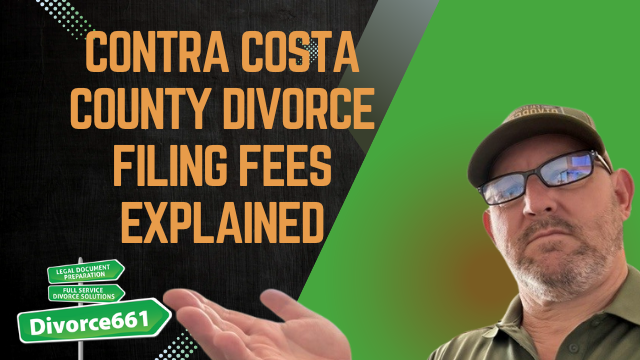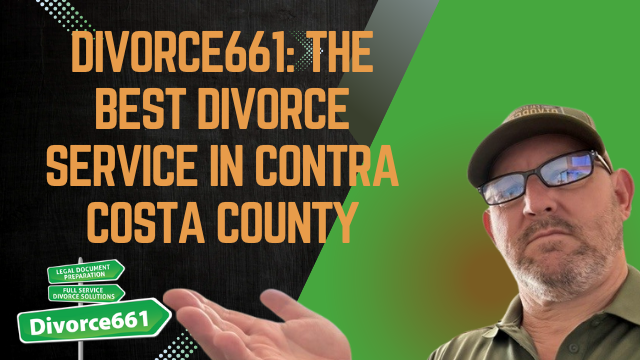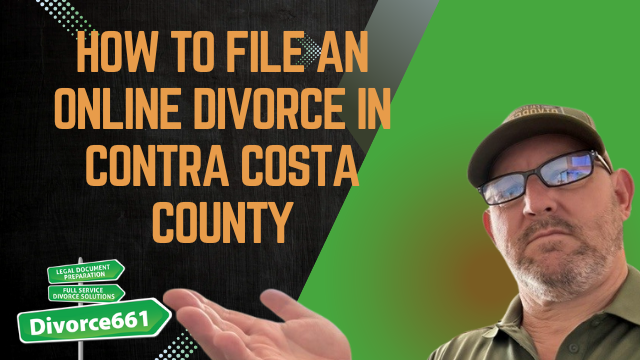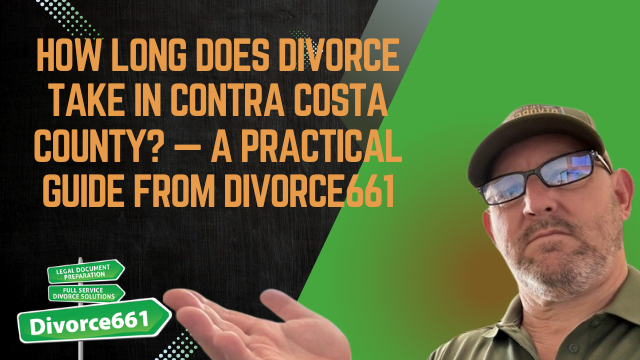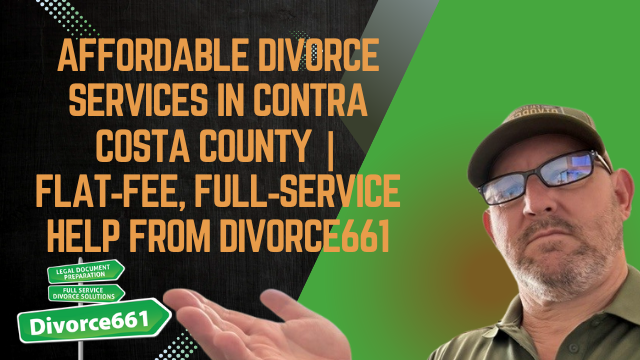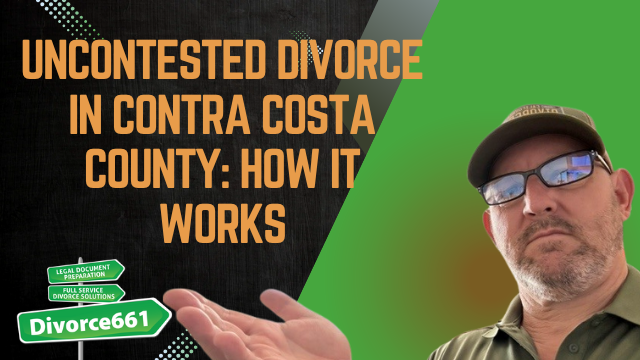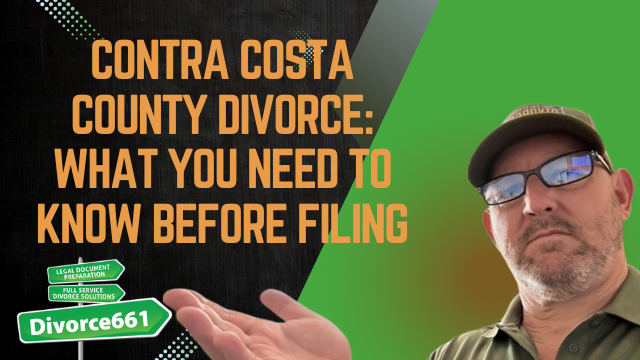Step-by-Step Guide to an Amicable Divorce in Contra Costa
Introduction
Hi — I’m Tim Blankenship from Divorce661. If you and your spouse are in agreement, an amicable divorce in Contra Costa County can be fast, affordable, and completely remote. In this guide I’ll walk you through the exact steps we use to get uncontested divorces filed, served, and approved with minimal stress and no courtroom appearances.
Why choose an amicable divorce?
An amicable divorce reduces time, cost, and emotional strain. When both parties communicate clearly and exchange the required information, you can avoid litigation and resolve matters with a clean, written agreement that the court will approve. Our flat-fee, remote service handles the paperwork so you can focus on moving forward.
Overview: The process in plain English
- File the petition and summons through Contra Costa’s e-filing system.
- Serve your spouse (or obtain a signed notice of acknowledgement) to start the timeline.
- Exchange mandatory financial disclosures detailing income, assets, and debts.
- Draft a comprehensive Marital Settlement Agreement covering property, support, and parenting.
- After the required waiting period, submit the judgment package for court approval.
Step 1 — Filing: petition and summons
Begin by e-filing the petition for dissolution and the summons through Contra Costa County’s court e-filing system. Accurate initial paperwork is critical — small mistakes can trigger rejections or delays. If children are involved, include the Uniform Child Custody Jurisdiction and Enforcement Act form (UCCJEA). Getting these documents right up front saves time and money.
Step 2 — Serving your spouse
Proper service starts the statutory timeline. The simplest method for cooperative couples is a Notice and Acknowledgement of Receipt (sometimes called a notice of acknowledgement). When your spouse signs that form, it officially documents service and begins the waiting period. For most uncontested matters in California, there is a mandatory waiting period before the court can enter final judgment — keep that in mind when planning your timeline.
Step 3 — Financial disclosures (don’t skip these)
Even when you agree, the court requires full financial disclosure. Both parties must exchange detailed information about:
- Income (pay stubs, tax returns)
- Bank accounts and investment accounts
- Real estate and vehicles
- Debts and liabilities
- Retirement accounts and other assets
These disclosures promote transparency and fairness and form the backbone of your written agreement.
Step 4 — Drafting a clean Marital Settlement Agreement
Your Marital Settlement Agreement (MSA) is the document that memorializes how you’ll divide property, handle support, and, if applicable, implement a parenting plan. Key topics to address in the MSA include:
- Property division (who gets what and when)
- Spousal support (amount and duration, if any)
- Child support and child custody/parenting time
- Allocation of debts
- How future disputes will be handled (mediation, arbitration)
A well-drafted MSA makes the final judgment straightforward for the court to approve and reduces the risk of future disputes.
Real client example
“We recently helped a couple in Contra Costa who wanted a fast, drama-free divorce. We filed, served, and submitted all required forms—and their judgment package was accepted without a single rejection, all in under 5 weeks.”
What this example shows is that clear communication and expert guidance allow the court to accept documents quickly. Note: while the court can accept and review your judgment package rapidly, California has a mandatory waiting period (generally six months from service) before the final judgment can be entered. Preparing and submitting accurate documents early positions you to finalize the case as soon as the waiting period expires.
Step 5 — Submitting your full judgment package
After the waiting period is satisfied, submit your complete judgment package for court approval. Accuracy is vital: incomplete or incorrect forms are the most common reason for rejections or delays. We double-check every page to prevent avoidable errors and to ensure a flawless submission.
Common pitfalls to avoid
- Incomplete or inaccurate e-filing forms
- Failing to include the correct child custody jurisdiction form when children are involved
- Skipping required financial disclosures
- Poorly drafted settlement agreements that leave key issues undefined
- Rushing to finalize before the mandatory waiting period ends
How Divorce661 helps
We specialize in amicable divorces in Contra Costa County. Our service is remote, flat-fee, and full-service — we handle everything from initial filing to submitting your final judgment package. That includes preparing and reviewing all forms, guiding service, facilitating financial disclosures, and drafting a clean Marital Settlement Agreement that the court will accept.
Next steps
Ready to start your divorce the smart way? Visit Divorce661.com to schedule your free consultation. We’ll review your situation, outline the steps specific to your case, and help you avoid the common mistakes that delay resolution.
Conclusion
An amicable divorce in Contra Costa County is possible, efficient, and less stressful when both parties cooperate and the paperwork is done right. With the right guidance, you can complete the process remotely, minimize disputes, and move forward with confidence. If you want help every step of the way, we’re here to guide you.



